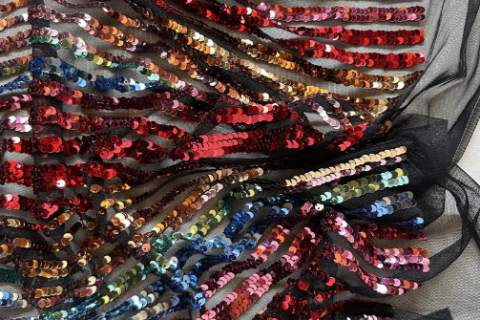COVID-19: how to make sewing spaces safer
Those of you who know me from the sewing community might not know that my background is in health policy and research. With many of the UK’s COVID restrictions due to be lifted soon, it feels like a good time to combine these two parts of my life.
Small sewing businesses, here are some thoughts on how to make your shops, offices, and other work spaces safer during this new phase of the pandemic. I hope it’s helpful.
First of all, what’s happening with COVID?
In the UK, COVID case numbers are increasing a lot, doubling around every 9 days. That doesn’t seem like much at first, but it adds up pretty quickly, as the projection below shows. Read this for more on exponential growth.

Vaccines are helping a huge amount. Thanks to them, a much smaller proportion of cases end in hospitalisation and death than they used to. But does that mean we don’t need to worry about cases going up any more? No, it doesn’t.
Cases matter because:
- A lot of the population are not fully vaccinated yet.
- A small proportion of a massive number can still be a big number. If cases get really, really high, a lot of people could die or get sick.
- Hospitalisations and deaths aren’t the only bad outcomes. Long COVID is too.
- The more cases there are, the more chances there are for new COVID variants to emerge.
- Smaller case numbers make it easier to get on top of outbreaks and avoid harsh measures like lockdowns and school closures.
- Smaller case numbers give the NHS space to focus on non-COVID work.
But don’t just take my word for it. This is the view of SAGE, who advise the government:

What’s happening with COVID restrictions?
Most public health measures – like wearing masks and distancing – are due to become ‘personal responsibility’ after 19 July. This is the government’s current plan.
So how can you make your sewing shop, office, workshop or other space safer?
COVID mainly spreads through the air. That means ventilation and fresh air are really important. Outside is best, and crowded indoor spaces are the riskiest. Have a look at this to find out more.
Here is some detailed guidance about how to make spaces safer. Please do read it in full, and here are some key points:
- Maximise the fresh air in your space using natural ventilation like windows and doors, and/or mechanical ventilation like (carefully positioned) fans to bring in fresh air from outside. Remember the toilets and other rooms too. As a bonus, these measures should also help with flu and other illnesses.
- Use CO2 monitors to give you an idea of how well ventilated your space is.
- Use air cleaning and filtration units when you can’t get ventilation levels high enough.
- Keep doing those public health measures we’ve been following up to now: distancing, washing hands, cleaning, staying at home if you’re infected, limiting the number of people in a space, wearing well-fitting masks in enclosed public spaces and so on.
- Talk to your co-workers about your plans to reduce any stress they might be feeling.
Where can I find out more?
- Guidance about making work spaces safer
- Independent SAGE’s weekly briefings to update the public on key topics and data related to the pandemic
- COVID rates in your area
- Recently updated evidence on masks and face coverings
- What the public thinks
Last but not least:
I know it’s not easy, and I know small business owners and teams often already have five hundred tasks on their to-do lists. It’s absolutely okay if you can’t do everything. Every little helps.
Thank you for reading.









